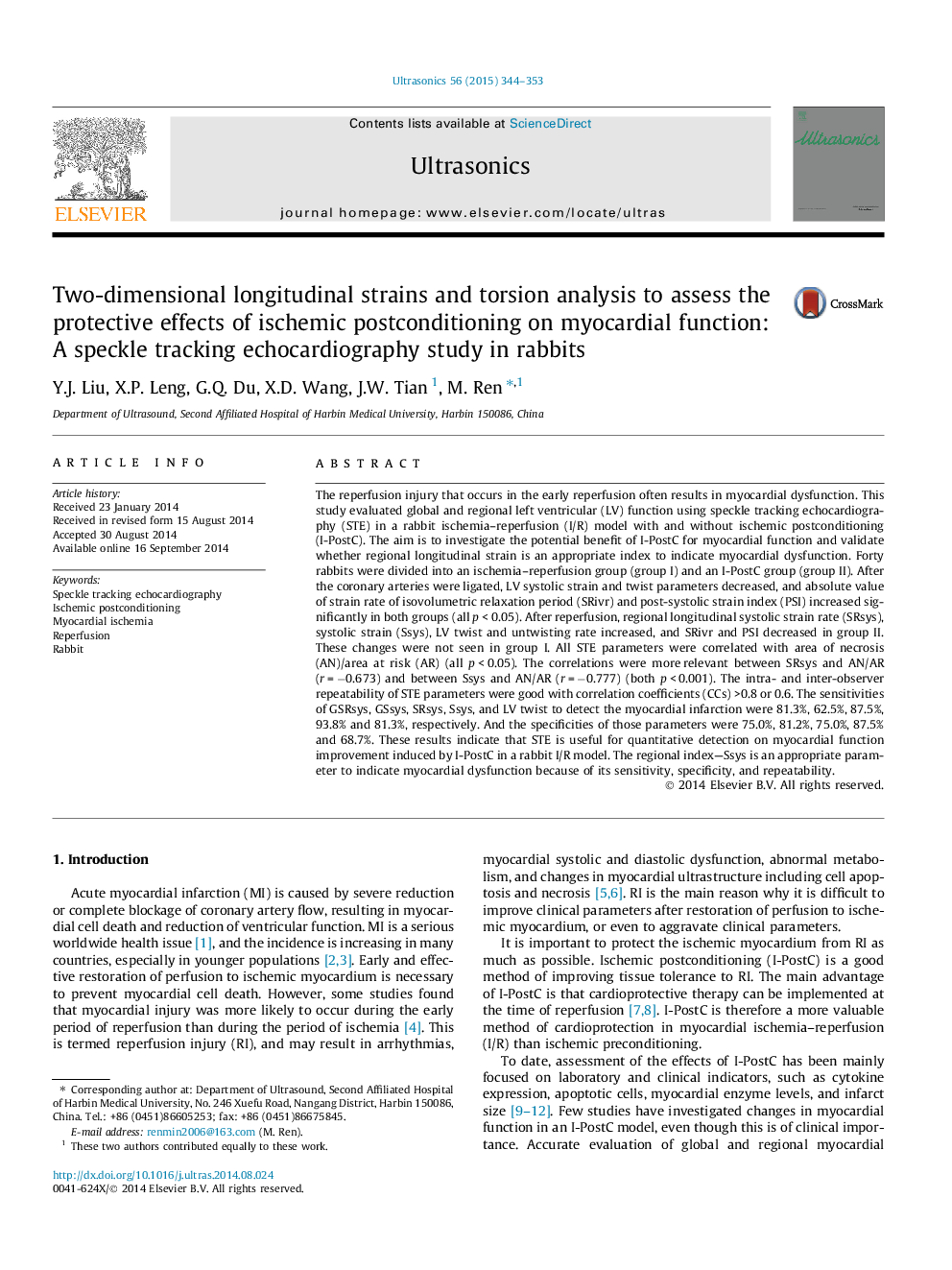| کد مقاله | کد نشریه | سال انتشار | مقاله انگلیسی | نسخه تمام متن |
|---|---|---|---|---|
| 8130681 | 1523213 | 2015 | 10 صفحه PDF | دانلود رایگان |
عنوان انگلیسی مقاله ISI
Two-dimensional longitudinal strains and torsion analysis to assess the protective effects of ischemic postconditioning on myocardial function: A speckle tracking echocardiography study in rabbits
ترجمه فارسی عنوان
تجزیه و تحلیل سوسپانسیون دو طرفه و طولی برای ارزیابی اثرات محافظت پس از قاعده ایسکمیک بر عملکرد میوکارد: مطالعه ای از طریق بررسی اکوکاردیوگرافی ریه در خرگوش
دانلود مقاله + سفارش ترجمه
دانلود مقاله ISI انگلیسی
رایگان برای ایرانیان
کلمات کلیدی
موضوعات مرتبط
مهندسی و علوم پایه
فیزیک و نجوم
آکوستیک و فرا صوت
چکیده انگلیسی
The reperfusion injury that occurs in the early reperfusion often results in myocardial dysfunction. This study evaluated global and regional left ventricular (LV) function using speckle tracking echocardiography (STE) in a rabbit ischemia-reperfusion (I/R) model with and without ischemic postconditioning (I-PostC). The aim is to investigate the potential benefit of I-PostC for myocardial function and validate whether regional longitudinal strain is an appropriate index to indicate myocardial dysfunction. Forty rabbits were divided into an ischemia-reperfusion group (group I) and an I-PostC group (group II). After the coronary arteries were ligated, LV systolic strain and twist parameters decreased, and absolute value of strain rate of isovolumetric relaxation period (SRivr) and post-systolic strain index (PSI) increased significantly in both groups (all p < 0.05). After reperfusion, regional longitudinal systolic strain rate (SRsys), systolic strain (Ssys), LV twist and untwisting rate increased, and SRivr and PSI decreased in group II. These changes were not seen in group I. All STE parameters were correlated with area of necrosis (AN)/area at risk (AR) (all p < 0.05). The correlations were more relevant between SRsys and AN/AR (r = â0.673) and between Ssys and AN/AR (r = â0.777) (both p < 0.001). The intra- and inter-observer repeatability of STE parameters were good with correlation coefficients (CCs) >0.8 or 0.6. The sensitivities of GSRsys, GSsys, SRsys, Ssys, and LV twist to detect the myocardial infarction were 81.3%, 62.5%, 87.5%, 93.8% and 81.3%, respectively. And the specificities of those parameters were 75.0%, 81.2%, 75.0%, 87.5% and 68.7%. These results indicate that STE is useful for quantitative detection on myocardial function improvement induced by I-PostC in a rabbit I/R model. The regional index-Ssys is an appropriate parameter to indicate myocardial dysfunction because of its sensitivity, specificity, and repeatability.
ناشر
Database: Elsevier - ScienceDirect (ساینس دایرکت)
Journal: Ultrasonics - Volume 56, February 2015, Pages 344-353
Journal: Ultrasonics - Volume 56, February 2015, Pages 344-353
نویسندگان
Y.J. Liu, X.P. Leng, G.Q. Du, X.D. Wang, J.W. Tian, M. Ren,
